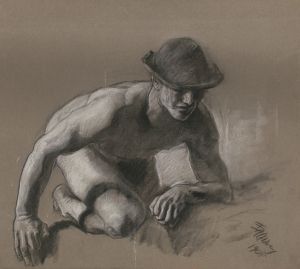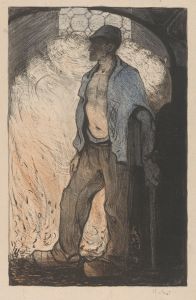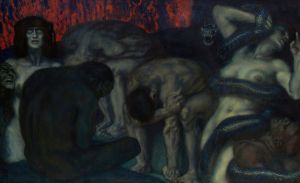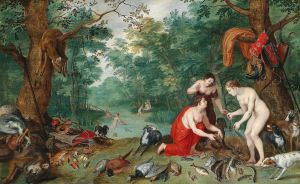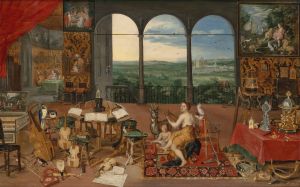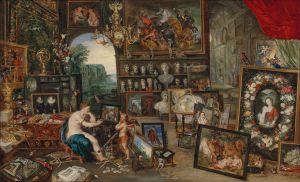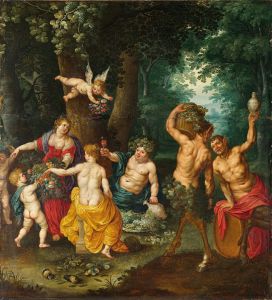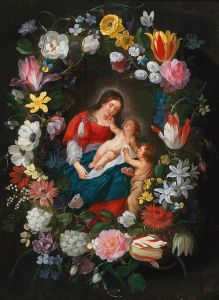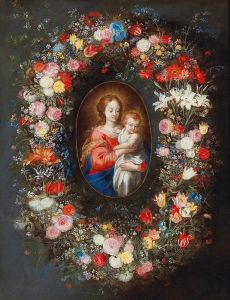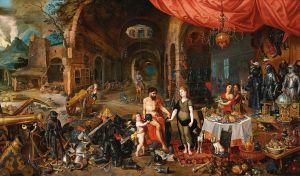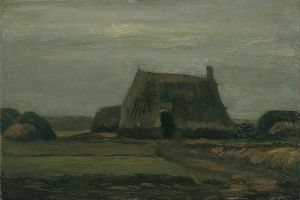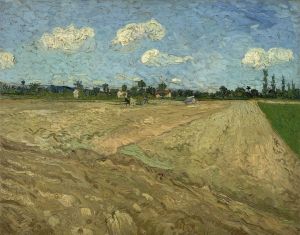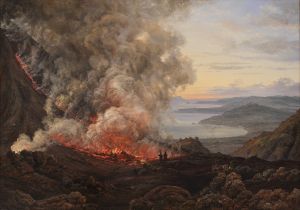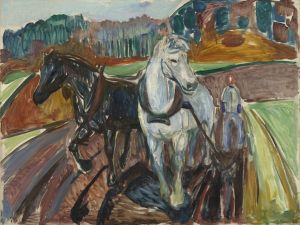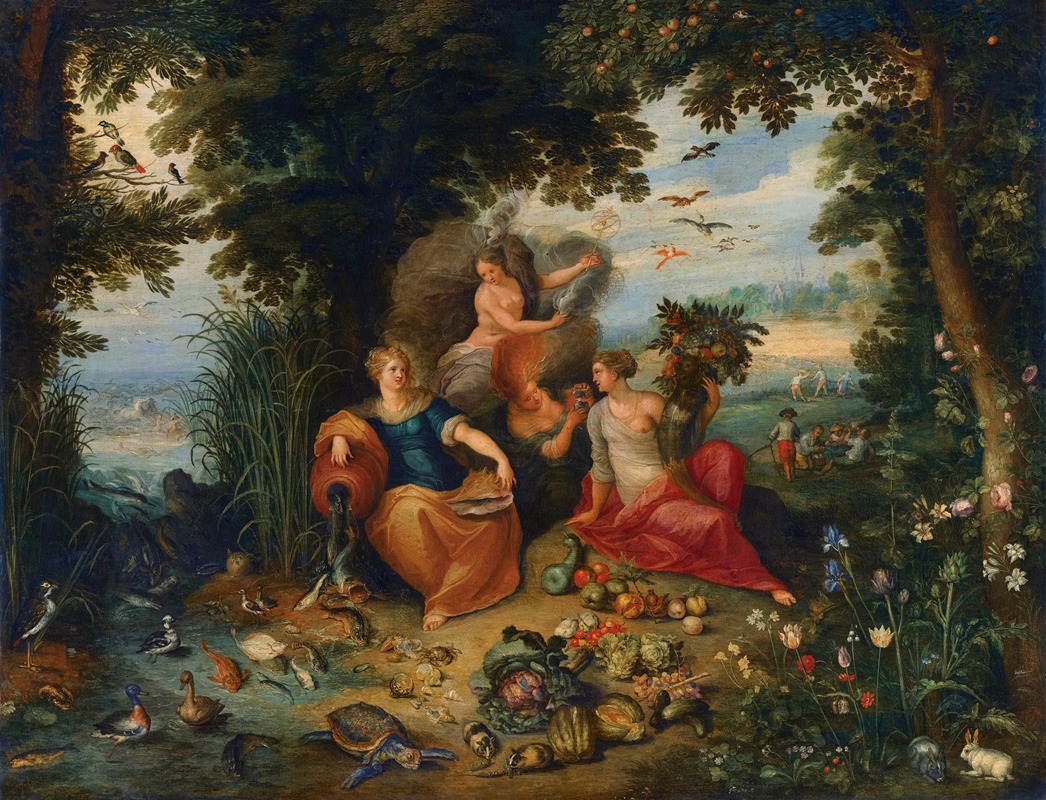
Allegory Of The Four Elements
A hand-painted replica of Jan Brueghel the Younger’s masterpiece Allegory Of The Four Elements, meticulously crafted by professional artists to capture the true essence of the original. Each piece is created with museum-quality canvas and rare mineral pigments, carefully painted by experienced artists with delicate brushstrokes and rich, layered colors to perfectly recreate the texture of the original artwork. Unlike machine-printed reproductions, this hand-painted version brings the painting to life, infused with the artist’s emotions and skill in every stroke. Whether for personal collection or home decoration, it instantly elevates the artistic atmosphere of any space.
Jan Brueghel the Younger, a prominent Flemish Baroque painter, is known for his detailed and vibrant works that often explore allegorical themes. One of his notable paintings is "Allegory of the Four Elements." This artwork is part of a tradition in European art where artists personify the four classical elements—earth, water, air, and fire—often integrating them into a harmonious composition that reflects the interconnectedness of nature.
Jan Brueghel the Younger was born in 1601 in Antwerp, into a family of artists. His father, Jan Brueghel the Elder, was a well-known painter, and his grandfather, Pieter Bruegel the Elder, was one of the most significant artists of the Northern Renaissance. Jan the Younger was trained by his father and inherited his workshop, continuing the family tradition of producing detailed and intricate paintings.
"Allegory of the Four Elements" is a testament to Jan Brueghel the Younger's skill in combining allegorical content with exquisite detail. In this painting, each of the four elements is represented through various symbols and figures, a common practice in allegorical art. Earth is often depicted with animals, plants, and landscapes, symbolizing fertility and the natural world. Water might be represented by rivers, seas, or aquatic creatures, emphasizing its life-giving and transformative properties. Air could be illustrated with birds or open skies, highlighting its ethereal and omnipresent nature. Fire is usually symbolized by flames, torches, or volcanic imagery, representing both destruction and warmth.
Brueghel's work is characterized by its meticulous attention to detail and vibrant use of color. His ability to render textures and surfaces with precision is evident in the way he paints the various elements. The composition is typically rich and filled with numerous figures and objects, inviting viewers to explore the painting closely to appreciate its complexity.
The painting reflects the Baroque era's fascination with the natural world and the desire to understand and categorize it. During this period, artists and scientists alike were exploring the relationships between different aspects of nature, and allegorical paintings like Brueghel's served as a visual representation of these ideas.
Jan Brueghel the Younger's "Allegory of the Four Elements" not only showcases his artistic talents but also provides insight into the cultural and intellectual currents of his time. The painting is a celebration of nature's diversity and the harmonious balance of its elements, themes that were central to the Baroque worldview.
While specific details about the provenance or current location of this particular painting might not be widely documented, Brueghel's works are held in high regard and can be found in major museums and private collections around the world. His contributions to art continue to be studied and appreciated for their beauty and complexity, as well as for their ability to convey profound philosophical and allegorical themes through visual means.





